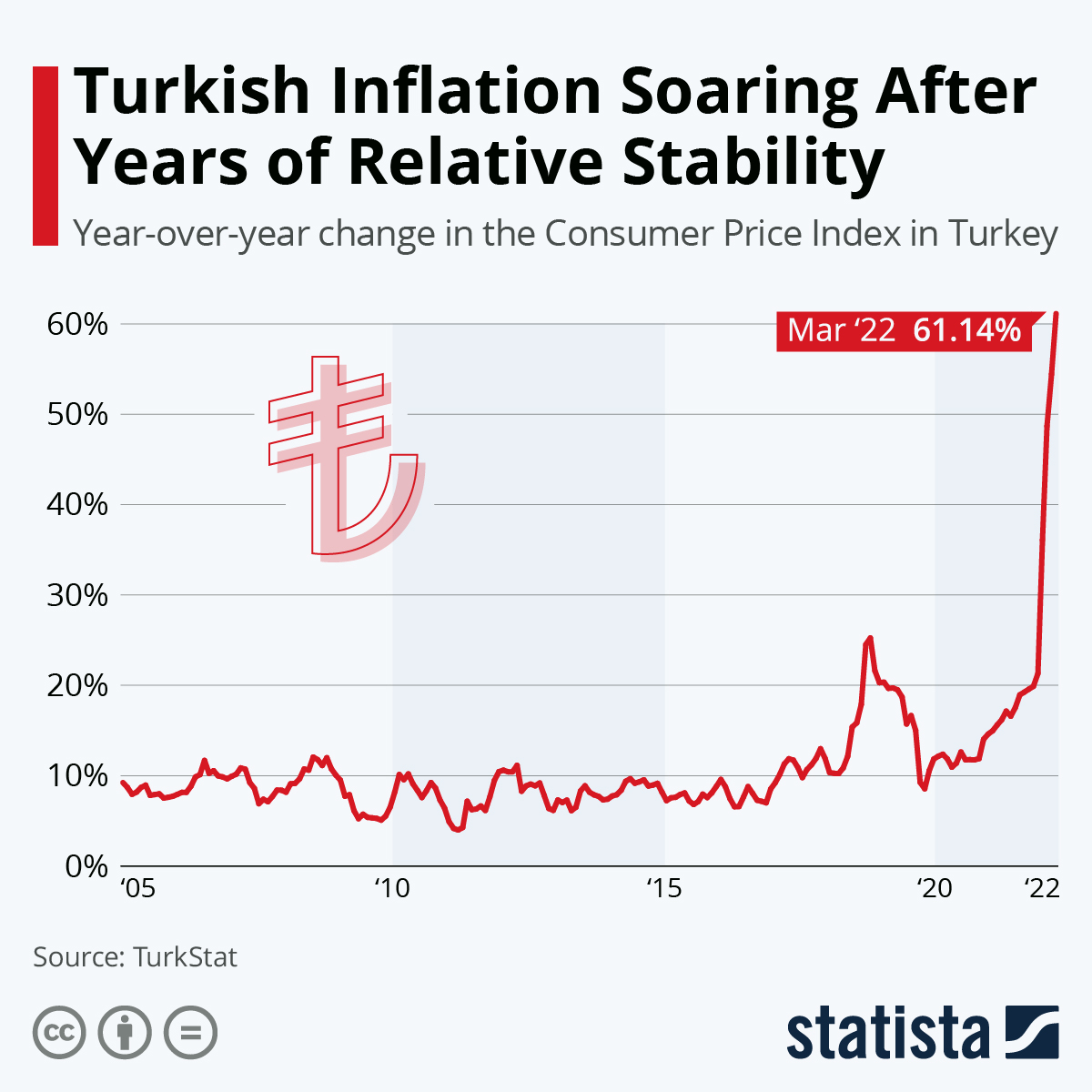Year-on-year inflation in the OECD area hit 7.7 percent in February, reflecting the first implications of rising food and energy costs around the world. While there were some significant outliers, Lithuania (14.2 percent) for example, or Japan with just 0.9 percent, one country stood out like a sore thumb.
In February, inflation in Turkey hit 54.4 percent. In what represented the latest increase in soaring cost of living in the country, official figures for March were to paint an even bleaker economic picture. As this infographic shows, the Year-on-year inflation rate in Turkey was a massive 61.1 percent last month.
Turkey is hardly a stranger to excessively high inflation, but this constitutes a 20-year high after what could be described as a period of relative CPI stability in the country. Aside from the factors which are causing inflation to rise in most countries, Turkey's central bank slashed its benchmark interest rate by 5 percentage points at the end of last year. As the Financial Times explains, "Erdogan, who rejects the established economic orthodoxy that high interest rates help to cool inflation, has refused to allow the country’s central bank to raise borrowing costs." The poor performance of the Turkish lira, which lost 44 percent of its value against the dollar in 2021, has added fuel to the inflation fire for the import-reliant Turkish economy.





















